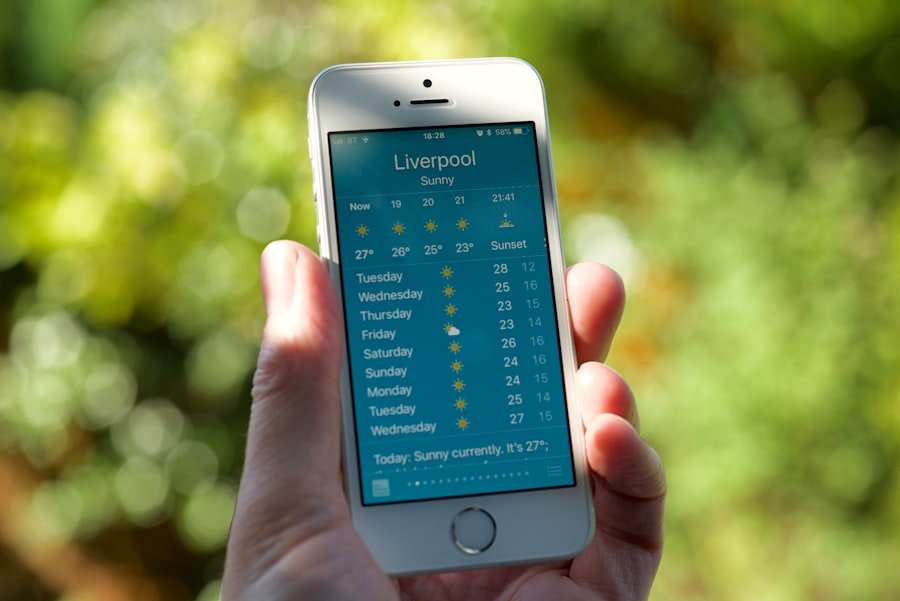
The inception of artificial intelligence assistants can be traced back to the early 2010s, a period marked by significant advancements in natural language processing and machine learning. The launch of Apple’s Siri in 2011 marked a pivotal moment in the evolution of AI technology. Siri was not merely a novelty; it represented a significant leap in how users interacted with their devices.
By employing voice recognition technology, Siri allowed users to perform tasks such as sending messages, setting reminders, and searching the web through simple voice commands. This innovation was underpinned by complex algorithms that enabled Siri to understand and process human speech, making it a groundbreaking tool in personal computing. Following closely on Siri’s heels, Microsoft introduced Cortana in 2014, further solidifying the trend of voice-activated assistants.
Cortana was designed to integrate seamlessly with Windows operating systems, providing users with a familiar interface while enhancing productivity through voice commands. The development of these early AI assistants was not just about convenience; it was also about creating a more intuitive user experience. As these technologies began to permeate everyday life, they laid the groundwork for future advancements in AI, demonstrating the potential for machines to understand and respond to human language in increasingly sophisticated ways.
Summary
- Siri and Cortana were among the first AI assistants, paving the way for voice-activated technology.
- Siri played a significant role in popularising voice-activated AI assistants and changing the way people interact with technology.
- Text-based AI assistants like Alexa and Google Assistant emerged as a complement to voice-activated assistants, offering a new way to interact with AI.
- The evolution of AI assistants has led to the integration of voice and text capabilities, providing users with more versatile and seamless experiences.
- ChatGPT represents the next generation of AI assistants, offering advanced language understanding and generation capabilities for more natural and intelligent interactions.
Siri and the Rise of Voice-Activated AI Assistants
Siri’s introduction heralded a new era in human-computer interaction, where voice became the primary medium for communication. The assistant’s ability to comprehend natural language and respond contextually was revolutionary. Users quickly embraced the convenience of hands-free operation, which allowed them to multitask effectively.
For instance, while driving, users could ask Siri for directions or to play music without taking their hands off the wheel. This functionality not only enhanced user experience but also contributed to safety on the roads. Moreover, Siri’s success prompted other tech giants to invest heavily in similar technologies.
Google launched Google Now shortly after Siri’s debut, which later evolved into Google Assistant. Amazon introduced Alexa, which became synonymous with smart home technology. These developments were not merely competitive responses; they reflected a broader societal shift towards voice-activated technology as an integral part of daily life.
The rise of smart speakers and home automation systems further entrenched these assistants into households, allowing users to control everything from lighting to temperature with simple voice commands.
The Emergence of Text-Based AI Assistants: From Alexa to Google Assistant

While voice-activated assistants gained popularity, the emergence of text-based AI assistants marked another significant evolution in this domain. Amazon’s Alexa and Google Assistant exemplified this shift by offering users the option to interact through both voice and text interfaces. This dual capability catered to diverse user preferences and contexts; for instance, in quiet environments or during work hours, users could opt for text-based interactions without disturbing others.
The integration of text-based functionalities allowed these assistants to expand their utility beyond simple commands. Users could engage in more complex interactions, such as asking for detailed information or conducting multi-step tasks through chat interfaces. For example, Google Assistant could provide comprehensive answers to queries by pulling information from various sources, enabling users to engage in more meaningful conversations with their devices.
This evolution not only enhanced user engagement but also showcased the versatility of AI assistants in adapting to different communication styles.
The Evolution of AI Assistants: Integrating Voice and Text Capabilities
As technology progressed, the lines between voice and text-based AI assistants began to blur, leading to a more integrated approach. The convergence of these capabilities allowed for a seamless user experience where individuals could switch between voice and text interactions fluidly. This integration was particularly beneficial in scenarios where one mode might be more appropriate than the other.
For instance, in a noisy environment, users could type their requests instead of speaking them aloud. Furthermore, this evolution facilitated the development of more sophisticated AI models capable of understanding context and intent across different modes of communication. The ability to maintain context over multiple interactions—whether spoken or typed—marked a significant advancement in AI technology.
This capability enabled assistants to provide more personalised responses based on previous interactions, thereby enhancing user satisfaction and engagement. As a result, AI assistants became not just tools for executing commands but also companions capable of understanding user preferences and adapting accordingly.
ChatGPT: The Next Generation of AI Assistants
The introduction of ChatGPT by OpenAI represented a significant leap forward in the capabilities of AI assistants. Unlike its predecessors, which primarily focused on task execution and basic conversational abilities, ChatGPT was designed with advanced language understanding and generation capabilities at its core. Built on the GPT architecture, ChatGPT could engage in nuanced conversations, providing detailed responses that reflected a deeper understanding of context and user intent.
ChatGPT’s architecture allowed it to generate human-like text based on prompts provided by users. This capability opened up new avenues for interaction, enabling users to engage in discussions that felt more natural and less transactional. For instance, rather than simply asking for weather updates or setting reminders, users could have extended conversations about various topics, ranging from personal interests to complex subjects like philosophy or science.
This shift towards more conversational AI marked a significant departure from earlier models that were often limited in their ability to sustain engaging dialogues.
ChatGPT’s Advanced Language Understanding and Generation Capabilities
One of the standout features of ChatGPT is its advanced language understanding capabilities, which allow it to interpret nuances in human communication effectively. This includes recognising idiomatic expressions, understanding context-specific meanings, and even detecting emotional undertones in conversations. Such capabilities enable ChatGPT to respond appropriately across a wide range of topics and scenarios, making it an invaluable tool for both casual users and professionals seeking assistance with complex tasks.
Moreover, ChatGPT’s generation capabilities are equally impressive. It can produce coherent and contextually relevant text that mimics human writing styles. This feature is particularly beneficial for applications such as content creation, where users can leverage ChatGPT to draft articles, generate creative writing prompts, or even assist with technical documentation.
The ability to generate high-quality text on demand has transformed how individuals approach writing tasks, allowing for greater efficiency and creativity in content production.
The Future of AI Assistants: Integrating ChatGPT into Everyday Life
As we look towards the future, the integration of ChatGPT into everyday life promises to redefine our interactions with technology. The potential applications are vast; from personal productivity tools that help manage schedules and tasks more effectively to educational platforms that provide tailored learning experiences based on individual needs. The versatility of ChatGPT allows it to adapt to various contexts, making it suitable for diverse industries such as healthcare, finance, education, and entertainment.
In the realm of customer service, for instance, businesses can deploy ChatGPT-powered chatbots that offer immediate assistance while maintaining a conversational tone that enhances customer satisfaction. These chatbots can handle inquiries ranging from product information to troubleshooting issues without the need for human intervention. This not only streamlines operations but also allows human agents to focus on more complex tasks that require emotional intelligence or nuanced understanding.
Ethical and Privacy Considerations in the Development of AI Assistants
As AI assistants become increasingly integrated into our lives, ethical and privacy considerations must be at the forefront of their development. The collection and processing of personal data raise significant concerns regarding user privacy and consent. Users often interact with AI assistants by sharing sensitive information—ranging from personal preferences to financial details—making it imperative for developers to implement robust data protection measures.
Moreover, there is an ongoing debate about the ethical implications of AI decision-making processes. As AI assistants become more autonomous in their responses and actions, questions arise regarding accountability and transparency. Users must be informed about how their data is used and how decisions are made by these systems.
Ensuring that AI operates within ethical boundaries is crucial for fostering trust between users and technology providers. In conclusion, while the evolution of AI assistants has brought about remarkable advancements in technology and user experience, it is essential that developers prioritise ethical considerations alongside innovation. Balancing technological progress with responsible practices will be key to ensuring that AI assistants serve as beneficial tools that enhance our lives without compromising our privacy or ethical standards.
In a recent article on Richard Liu’s journey in e-commerce, the evolution of AI assistants was highlighted as a key factor in the success of online businesses. From Siri to ChatGPT, these intelligent virtual assistants have revolutionised the way companies interact with customers and streamline their operations. As technology continues to advance, it is clear that AI assistants will play an increasingly important role in the future of e-commerce.
FAQs
What is an AI assistant?
An AI assistant, also known as a virtual assistant, is a software agent that can perform tasks or services for an individual based on commands or questions. These assistants use artificial intelligence to understand natural language and provide helpful responses.
How has AI assistant technology evolved over time?
AI assistant technology has evolved significantly over the years. Early AI assistants like Siri and Google Assistant were primarily focused on voice commands and simple tasks. However, with advancements in natural language processing and machine learning, AI assistants have become more sophisticated, capable of understanding complex queries and providing more personalised and contextually relevant responses.
What are some popular AI assistants today?
Some popular AI assistants today include Siri, Google Assistant, Amazon Alexa, and Microsoft’s Cortana. Additionally, chatbots like ChatGPT have gained popularity for their ability to engage in more natural and context-aware conversations.
How do AI assistants like ChatGPT differ from traditional AI assistants?
AI assistants like ChatGPT differ from traditional AI assistants in their ability to engage in more natural and context-aware conversations. While traditional AI assistants are primarily focused on performing tasks and providing information, ChatGPT and similar models are designed to simulate human-like conversations and provide more nuanced and personalised responses.
What are some potential future developments for AI assistants?
Future developments for AI assistants may include improved natural language understanding, better contextual awareness, and the ability to perform more complex tasks. Additionally, AI assistants may become more integrated into various devices and platforms, providing seamless and personalised assistance across different aspects of our lives.
